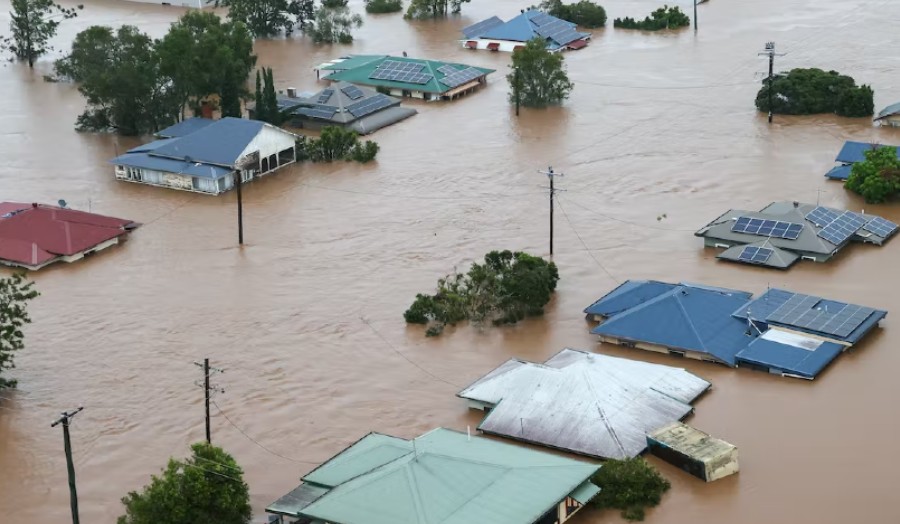Planning a heap of outdoor events this summer? Well, hold the phone, because The Bureau of Meteorology has said the third La Niña is going to be a wet one.
As confirmed by the BOM yesterday, Australia is set to experience our third La Niña in a row, so keep your umbrella and your raincoat handy for a bit longer yet!
In a statement released on Tuesday (September 13), The Bureau of Meteorology declared that the Tropical Pacific sea surface temperatures have been cooling since June and are now at La Niña thresholds, which basically means, it’s about to get wet: “Key atmospheric and oceanic indicators of the El Niño–Southern Oscillation (Enso) showed “an established La Niña”.

Eastern Australia is still getting over the last two wet La Niña summers. According to Dr Margaret Cook, environmental historian, lecturer at the University of the Sunshine Coast, and researcher at Griffith University who spoke to ABC, “The problem with a triple La Niña is that the ground is very wet already, our rivers are quite high, our creeks are full and our dams are quite full. So we have less capacity to absorb this enormous amount of rain.”

So what is La Niña, what can we expect this summer, and how can we prepare?
- La Niña is a natural cycle in the tropical pacific ocean that can influence the global climate.
- It can shift tropical moisture towards Australia, which can create a higher than average rainfall in late Spring, that lasts through Summer.
- We can expect wetter than average conditions in Australia’s north and east, with the added risk of flooding in the months ahead.
- Predictions illustrate that the worst floods may come in late summer.
- La Niña should pass by Autumn.
To stay on top of the weather, we have compiled a quick checklist:
- Stay alert and tune in to local media for current weather advice and warnings.
- Make a flood emergency plan and discuss it with your family ahead of time.
- Know where your gas, electricity, and water mains are in case you need to turn them off.
- Check your roof for leaks, especially around flashing where many leaks occur.
- Clear your gutters and downspouts.
- Repaint the wood trim on your home. Paint is a barrier against water intrusion.
- Check your property for proper grading and surfacing, including making sure water runs away from walls.
- Have shovels, sandbags, bags of dirt or straw, and plastic sheeting to use a barrier against water. Store in a dry, accessible location.
- Check stressed trees.
- Secure garden furniture. Especially thinsg that can blow away.
- Scan important documents and put them on a flash drive or in the cloud.
- If your property is prone to power outages, consider a small generator.
- If you have below-ground areas such as basements or garages, consider a sump pump.
- Consider purchasing a water tank/tanks to catch water.
- Wet weather shoes/Gumboots.
- Extra indoor clothes hanger/dryer.
A #LaNiña event is underway in the Pacific Ocean. The Bureau's 3-month climate outlook shows a high chance of above-average rainfall for the eastern half of Australia. La Niña is not the only driver influencing this wet outlook. Learn more – https://t.co/Sxi7noGXVN pic.twitter.com/JJ7aYtxEEm
— Bureau of Meteorology, Australia (@BOM_au) September 13, 2022



